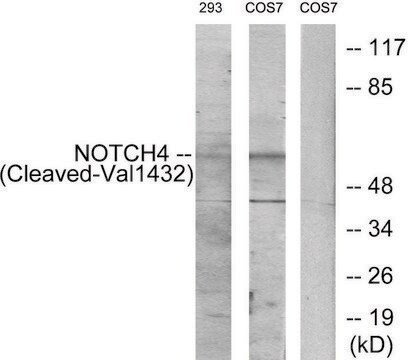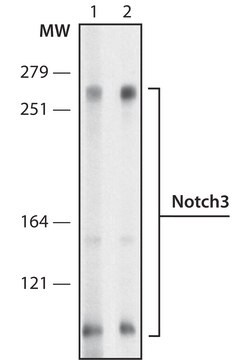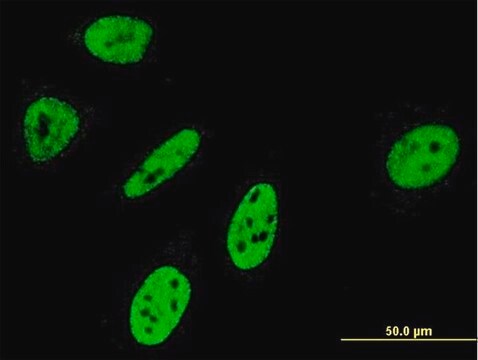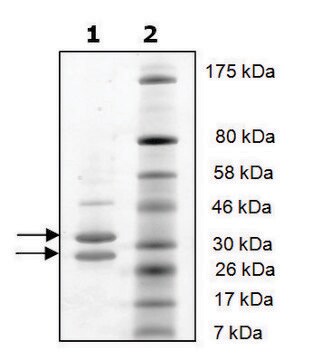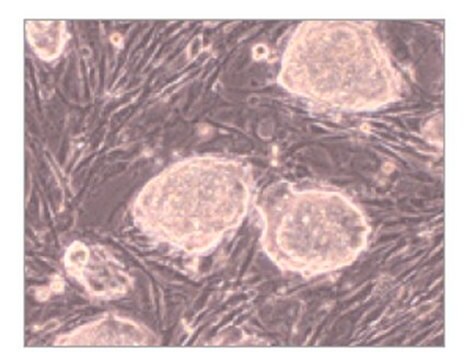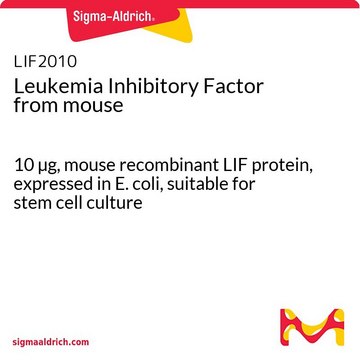MABC594
Anti-NOTCH 3/N3ECD Antibody, clone 1E4
clone 1E4, 1 mg/mL, from mouse
Sinónimos:
Neurogenic locus notch homolog protein 3, Notch 3, Notch 3 extracellular truncation, Notch 3 intracellular domain, N3ECD Domain, Ectodermal N3ECD, N3ECD
About This Item
Productos recomendados
origen biológico
mouse
Nivel de calidad
forma del anticuerpo
purified immunoglobulin
tipo de anticuerpo
primary antibodies
clon
1E4, monoclonal
reactividad de especies
human
concentración
1 mg/mL
técnicas
electron microscopy: suitable
immunocytochemistry: suitable
western blot: suitable
isotipo
IgG1κ
Nº de acceso NCBI
Nº de acceso UniProt
Condiciones de envío
wet ice
modificación del objetivo postraduccional
unmodified
Información sobre el gen
human ... NOTCH3(4854)
Descripción general
Especificidad
Inmunógeno
Aplicación
Immunohistochemistry Analysis: A representative lot of this antibody was used to detect NOTCH 3 in Huamn vascular smooth muscle cells & smooth muscle cells of vessels from CADASIL brain tissue (Jouet, A., et al. (2000) Journal of Clinical Investigation. 105(5):597-605).
Electron Microscopy: A representative lot of this antibody was used to detect NOTCH 3 in smooth muscle cells of vessels from CADASIL brain tissue (Jouet, A., et al. (2000) Journal of Clinical Investigation. 105(5):597-605).
Immunohistochemistry Analysis: A representative lot of this antibody was used to detect NOTCH 3 in vessels of a CADASIL patient (Rouchox, M.M., et al. (2003) American Journal of Pathology. 162(1):329-342).
Immunohistochemistry Analysis: A representative lot of this antibody was used to detect NOTCH 3 in Human colorectal carcinoma (Serafin, V., et al., (2011) Journal of Pathology. 224(4):448-60).
Apoptosis & Cancer
Developmental Signaling
Calidad
Western Blotting Analysis: 1 µg/mL of this antibody detected NOTCH 3 & the ectodermal domain (N3ECD) in 10 µg of MCF-7 cell lysate.
Descripción de destino
This antibody detects both the full length NOTCH 3 protein (~260 kDa) and the ectodermal domain N3ECD (~210 kDa).
Forma física
Almacenamiento y estabilidad
Cláusula de descargo de responsabilidad
¿No encuentra el producto adecuado?
Pruebe nuestro Herramienta de selección de productos.
Código de clase de almacenamiento
12 - Non Combustible Liquids
Clase de riesgo para el agua (WGK)
WGK 1
Punto de inflamabilidad (°F)
Not applicable
Punto de inflamabilidad (°C)
Not applicable
Certificados de análisis (COA)
Busque Certificados de análisis (COA) introduciendo el número de lote del producto. Los números de lote se encuentran en la etiqueta del producto después de las palabras «Lot» o «Batch»
¿Ya tiene este producto?
Encuentre la documentación para los productos que ha comprado recientemente en la Biblioteca de documentos.
Nuestro equipo de científicos tiene experiencia en todas las áreas de investigación: Ciencias de la vida, Ciencia de los materiales, Síntesis química, Cromatografía, Analítica y muchas otras.
Póngase en contacto con el Servicio técnico
